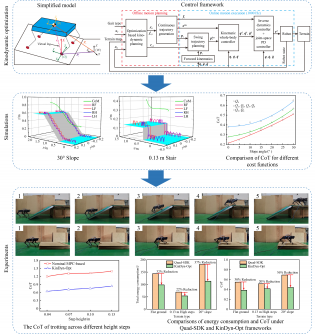Researchers at St. Jude Children’s Research Hospital have identified how mitochondria and lysosomes work together to influence the activation of regulatory T cells, key components of the immune system that help control inflammation. Published on October 24, 2025, in the journal Science Immunology, the findings could have significant implications for understanding autoimmune diseases and enhancing immunotherapy for cancer.
The immune system employs inflammation as a defense mechanism against threats. Regulatory T cells play a crucial role in managing this response, ensuring that inflammation is appropriately controlled and that tissues can return to normal once a threat is neutralized. This fundamental role was recognized in 2025, when the Nobel Prize in Physiology or Medicine was awarded for the discovery of these cells. Dysfunction in regulatory T cells can lead to uncontrolled inflammation or autoimmune disorders.
Understanding Regulatory T Cell Activation
Despite their importance, the precise mechanisms driving regulatory T cell activation have remained largely unclear, hampering efforts to leverage these cells for treating autoimmune or inflammatory conditions. “We discovered how regulatory T cells are activated and become more immunosuppressive during inflammation,” said Hongbo Chi, PhD, the chair of the Department of Immunology and co-director of the Center of Excellence for Pediatric Immuno-Oncology (CEPIO).
The research team utilized single-cell RNA sequencing on regulatory T cells from a mouse model undergoing inflammation. They identified four distinct activation states characterized by changes in gene expression related to energy production and cellular metabolism. “These regulatory T cells undergo dynamic metabolic changes, transitioning from a relatively inactive state to a highly activated state before returning to baseline,” explained Jordy Saravia, PhD, the study’s first author. This final state, previously unrecognized, may illuminate how these cells are deactivated once their role is complete.
Interplay Between Mitochondria and Lysosomes
After establishing the various activation states of regulatory T cells, the researchers investigated the mechanisms governing these transitions. Using electron microscopy, they discovered that more active regulatory T cells possessed a greater number of mitochondria compared to their resting counterparts. These mitochondria exhibited more complex cristae structures, indicating enhanced energy production capabilities.
When the team deleted the Opa1 gene, essential for mitochondrial cristae alterations, they noted a compensatory increase in lysosomes. Although lysosomes recycle cellular materials to generate energy, regulatory T cells lacking Opa1 still struggled to produce sufficient energy and maintain their immunosuppressive functions. Deleting another gene, Flcn, which regulates lysosomal activity, further impaired the function of these cells.
The researchers also found that the deletion of either Flcn or Opa1 affected the activity of TFEB, a protein involved in lysosome-related gene expression during energy stress responses. This suggests a complex network of signaling between mitochondria and lysosomes, crucial for the functional performance of regulatory T cells.
“We are the first to dissect this inter-organelle signaling between mitochondria and lysosomes in regulatory T cells,” Saravia stated. “These metabolic pathways dictate distinct activation states and influence the efficacy of these cells in immunosuppression.”
One of the more unexpected findings indicated that without Flcn, regulatory T cells could not effectively migrate to non-lymphoid tissues, such as the lung and liver. These migration patterns are essential for regulatory T cell function in tumors, where they suppress anti-tumor immune responses. The research team assessed whether the deletion of Flcn could enhance anti-tumor immune responses, discovering that it did lead to reduced tumor growth and less accumulation of exhausted CD8+ T cells, which often hinder immunotherapy effectiveness.
“We’ve taken the first unbiased look at the metabolic mechanisms of how regulatory T cells become activated during inflammation,” Chi noted. “Understanding how organelles influence resting versus activated states in these cells provides new insights that could improve treatments for autoimmune disorders and cancer.”
This research was conducted with the support of multiple grants from the National Institutes of Health and the American Lebanese Syrian Associated Charities (ALSAC), which funds and creates awareness for St. Jude’s work.
As scientists continue to explore the connections between metabolism and immune function, these findings pave the way for potential therapeutic interventions aimed at optimizing regulatory T cell activity in various medical contexts.







